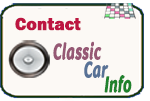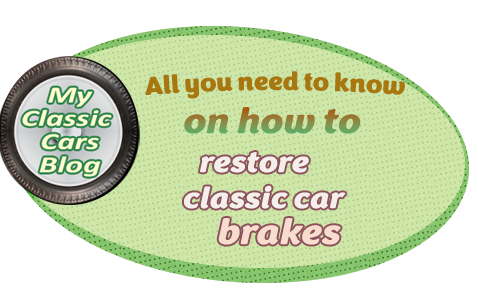 A restored classic should not just look good, run well and really impress the neighbours, but if it does not have a fully functional set of brakes, it will not be looking good for too long.
A restored classic should not just look good, run well and really impress the neighbours, but if it does not have a fully functional set of brakes, it will not be looking good for too long.
When assessing a car with a view to restoration, a close look at the brakes is a must.
It's possible to carry out a close inspection of an entire braking system with a minimum of upheaval.
All that's required is to raise the vehicle on a ramp, if possible, and take a quick look at the state of the disc and the brake pads, and check for any signs of superficial damage.
If there is no ramp in the vicinity, then a hydraulic jack will have to do- all that it means raising the car and checking each wheel individually.
The first item that should be focused on is the discs, which, if in good condition, should give off a uniform shine that should run all the way to the disc's outer edge in a uniform mode.
The majority of brake discs that have been in use for some time are bound to have a few lines running across them- but there is no reason to panic, as these are just signs of normal wear and tear.
If these lines have grown and the disc has begun to take on a distinctly grooved appearance, then they will be ready for replacement. It is always recommended that discs be replaced in pairs to provide continuity when braking.
![]()
The next on the list of brake parts that should be scrutinised are the calipers.
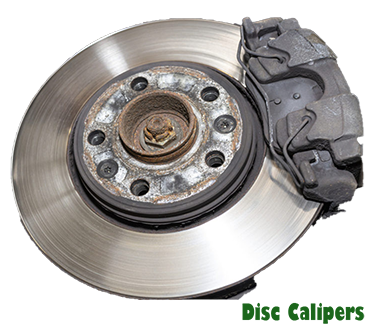 Calipers are possibly the most essential brake parts as their role is to slow the vehicle's wheels down to a stop - by creating friction with the brake rotors when the brake pedal is compressed.
Calipers are possibly the most essential brake parts as their role is to slow the vehicle's wheels down to a stop - by creating friction with the brake rotors when the brake pedal is compressed.
 Clamp like in appearance, brake calipers are attached to the rotor, while inside each calliper is a brake pad.
Clamp like in appearance, brake calipers are attached to the rotor, while inside each calliper is a brake pad.
When the brake pedal is compressed, brake fluid is released through the brake linings, generating pressure on the brake pistons inside the brake calliper, forcing the pads against the brake rotor and stopping the car.
Brake linings are usually rubber-coated lines and should always be maintained in a soft and supple condition.
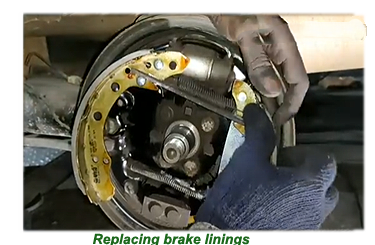 Brake pads are no less critical than the discs and callipers, although they are expected to have a shorter life span than the others.
Brake pads are no less critical than the discs and callipers, although they are expected to have a shorter life span than the others.
If the pads have worn down to next to nothing, it is best to give up on a test drive until they can be replaced, which is a straightforward and inexpensive process.
Another potentially problematic component of a braking system is the wheel housing assembly.
Situated between the brake drums or discs and the drive axle, the wheel housing assembly often has a set of splined teeth designed to fit on to the axle shaft. The axle hub spins along with the wheels to which it is bolted, allowing the wheels to rotate.
![]()
Bearings inside the assembly rapidly wear out, causing the wheels to stop turning to their maximum capacity, causing the vehicle to handle poorly.
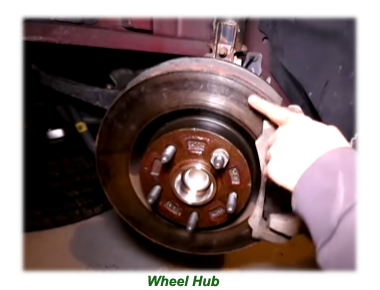 If the hubs are not repaired or replaced, the wheels will become shaky and not secure.
If the hubs are not repaired or replaced, the wheels will become shaky and not secure.
If the hub assembly is continuously allowed to degrades, the steel will eventually fracture, and, in extreme cases, the wheel to which it is attached may come off in the middle of a journey.
It is thoroughly recommended to check the state of the brake discs, pads, hubs and other components before setting out on a test drive, reducing the risk of an accident.
 While a test drive provides an ideal opportunity to get a more comprehensive picture of the state of the brakes, it should not be done if the brakes are in a dangerous condition.
While a test drive provides an ideal opportunity to get a more comprehensive picture of the state of the brakes, it should not be done if the brakes are in a dangerous condition.
If the targeted vehicle is worthy of restoration, even in the worst-case scenario. renewing its brakes represents a very wise investment while increasing safety levels for all those who travel in it.
Take me back to the home page.
ub5
